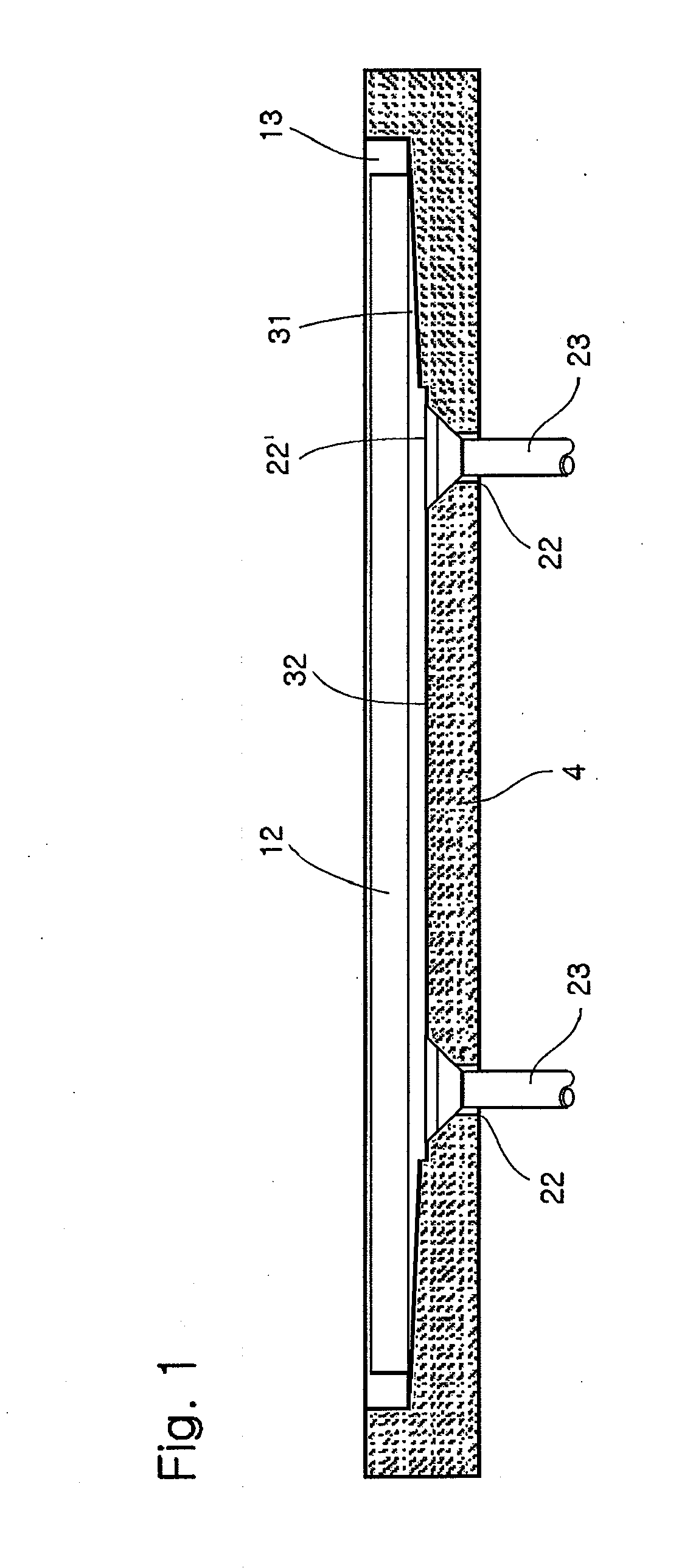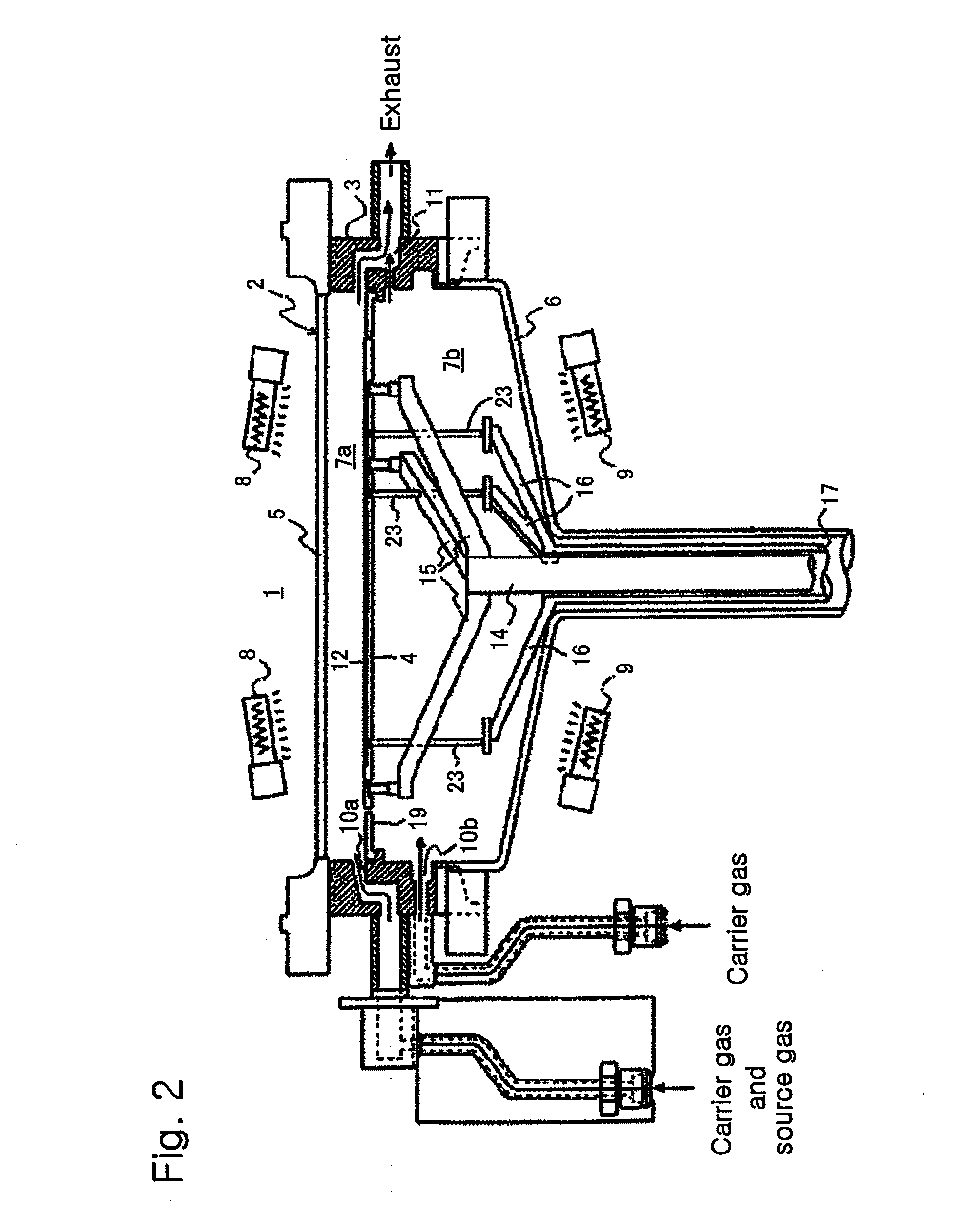Method of manufacturing epitaxial silicon wafer and apparatus thereof
a manufacturing method and silicon wafer technology, applied in the direction of crystal growth process, polycrystalline material growth, chemically reactive gas, etc., can solve the problems of difficult to say that the thickness is good enough, difficult to secure the flatness of the edge part, and difficult to achieve the thickness uniformity of the layer, etc., to achieve the effect of improving the thickness of the epitaxial silicon wafer
- Summary
- Abstract
- Description
- Claims
- Application Information
AI Technical Summary
Benefits of technology
Problems solved by technology
Method used
Image
Examples
example 1
[0104] FIGS. 13 to 17 show layer thickness distribution when an epitaxial layer is formed by changing spot facing depth. Duplicated explanation thereof is omitted because of similarity to FIGS. 5 and 6. FIGS. 13 and 14 show a partial enlarged cross section of a susceptor and the like, and FIG. 15 is a top view of the susceptor 4. FIG. 16 is a graph showing spot facing depth and being developed with respect to the angle. The spot facing depth of the present case is made smaller at shallow parts than the thickness D1 of a semiconductor wafer 12. As shown in FIGS. 15 and 16, the spot facing depth changes with a cycle of about 90 degrees.
[0105] In a (100) substrate (notch direction 0°) which is the semiconductor wafer, the growth rate of the epitaxial layer of an edge part becomes gradually slower as the direction changes from 0° to 45°. The susceptor was machined so as to minimize the spot facing depth of the portion in which the direction of 45° of the wafer is located when the wafer...
example 2
[0106] FIGS. 18 to 20A and 21A show layer thickness distribution when an epitaxial layer is formed by changing pocket width. Duplicated explanation is omitted because of similarity to FIGS. 7 and 8. FIGS. 18 and 19 show a partial enlarged cross section view of a susceptor and the like, and FIG. 20 is a top view of the susceptor 4. FIG. 21A is a graph showing the effect of pocket width on layer thickness and being developed with respect to the angle. The pocket width in this experiment is made slightly wider than the radius of a semiconductor wafer 12 at a narrow part, and about 5 mm wider than the above diameter at a wide part. As shown in FIG. 20A, the pocket width changes with a cycle of 90 degrees.
[0107] In a (100) substrate (notch direction 0°) which is a semiconductor wafer, the growth rate of the epitaxial layer of an edge part becomes gradually smaller as the direction changes from 0° to 45°. The susceptor was machined so as to maximize the pocket width of the portion in whi...
example 3
[0113] FIGS. 22 to 26 show layer thickness distribution as an epitaxial layer is formed by changing thermal capacity (partial thickness of susceptor). Duplicated explanation thereof is omitted because of the similarity to FIGS. 9 and 10. FIGS. 22 and 23 show a partial enlarged cross section view of a susceptor and the like, and FIG. 24 is a schematic diagram of the bottom of the susceptor 4. FIG. 25 shows the variation of susceptor thickness developed with respect to the angle. FIG. 26 is a graph showing the effect of susceptor thickness on layer thickness developed with respect to the angle. In this susceptor, the partial thickness of a thick portion is about 20% larger than the partial thickness of a thin portion. As FIGS. 24 and 25 show, the thickness of the susceptor changes with a cycle of about 90 degrees.
[0114] In a (100) substrate (notch direction 0°) which is a semiconductor wafer, the growth rate of the epitaxial layer of an edge part becomes gradually smaller as the dire...
PUM
| Property | Measurement | Unit |
|---|---|---|
| temperature | aaaaa | aaaaa |
| length | aaaaa | aaaaa |
| length | aaaaa | aaaaa |
Abstract
Description
Claims
Application Information
 Login to View More
Login to View More - R&D
- Intellectual Property
- Life Sciences
- Materials
- Tech Scout
- Unparalleled Data Quality
- Higher Quality Content
- 60% Fewer Hallucinations
Browse by: Latest US Patents, China's latest patents, Technical Efficacy Thesaurus, Application Domain, Technology Topic, Popular Technical Reports.
© 2025 PatSnap. All rights reserved.Legal|Privacy policy|Modern Slavery Act Transparency Statement|Sitemap|About US| Contact US: help@patsnap.com



